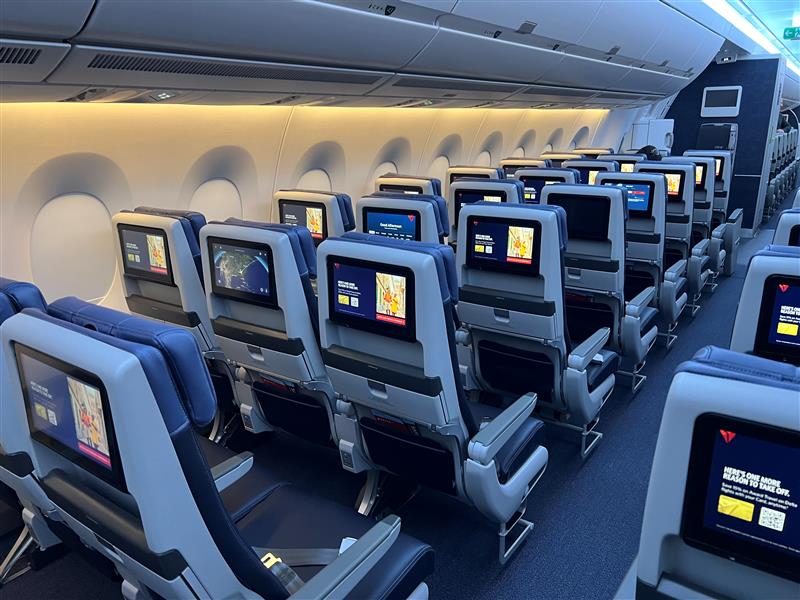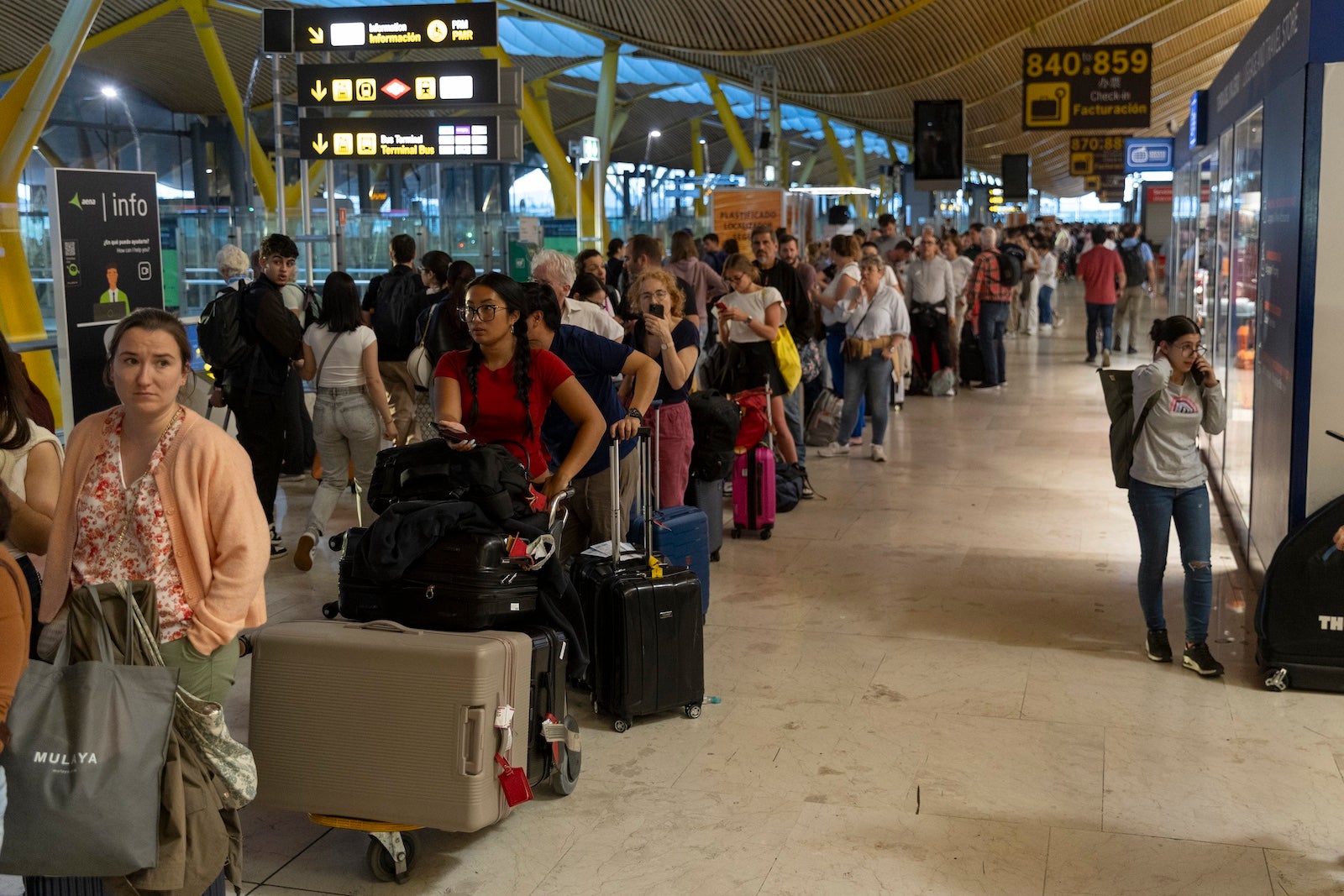How Delta’s First 100 Years Took Off—with Grit, Heart And A Boeing 767 Bought By Employees

- Delta Air Lines celebrated its 100th anniversary, marking a century of growth from its origins as a crop-dusting service.
- The newly renovated Delta Flight Museum showcases the airline's history, featuring aircraft, artifacts, and interactive exhibits.
- The "Spirit of Delta," a Boeing 767 purchased through employee fundraising, is a centerpiece of the museum.
ATLANTA ― The "Spirit of Delta" Boeing 767 is truly the centerpiece of the airline’s newly-overhauled flight museum. It fills the bulk of a room in a converted aircraft hangar, and no matter where you stand, your eyes can’t help but track back to it.
It’s not the only plane at the museum, but it is arguably the most important to the airline. Delta is the first U.S. carrier to reach 100 years old, and current and former employees say the Spirit of Delta encapsulates the company’s culture over the last century.
Delta wasn’t always a major U.S. airline. In fact, it started its life on March 2, 1925, as Huff Daland Dusters, a crop-dusting service in Macon, Georgia. A few months later, the company’s headquarters moved to Monroe, Louisiana, and for the first few years, crop dusting was the company’s primary focus.
A group of investors acquired Huff Daland’s assets in December of 1928 and reincorporated as Delta Air Service (named after the Mississippi River delta). A few months later, on June 17, 1929, Delta flew its first paying passengers from Dallas to Jackson, Mississippi, with stops in Shreveport and Monroe, Louisiana.
Marie Force, archives director at the Delta Flight Museum, told USA TODAY that she especially loves looking at photos from the company’s earliest days.
“You're looking at a dirt field, you know, and it looks like some sheds in the background and it really captures just how pioneering and amazing it was to fly, to have air service in these towns,” she said, talking about a black and white photo the museum received of a little girl standing with her father in Shreveport in front of a 1929 Travel Air single-engine prop plane operated by Delta.
“If you're thinking about a hundred years, aviation really isn't that old, you know, compared to railroads, so we're really talking about modern history, and so you still have a chance of capturing some of that early history,” Force said.
She added that as an archivist, she tries to learn the story behind every item and record as many oral histories as possible from current and former employees.
Needless to say, Delta has grown, expanded, and adapted in the last 100 years and is now one of the largest and most profitable airlines in the world.
In 2024, Delta earned $1.7 billion in operating income. The airline has a fleet of more than 990 planes, according to planespotters.net. It employs around 100,000 people and serves 290 destinations on six continents, according to the Delta corporate fact sheet.
One former flight attendant, Diane Carvelli, told USA TODAY that in almost 37 years working with Delta, starting in 1965, she witnessed a lot of changes at the airline firsthand, but always felt like the company was a big family.
“When we took care of each other, it just was an exciting job,” she said. “Sometimes you'd be somewhere, and you'd think, wow, and I'm getting paid for this. It's a wonderful opportunity for young people, and then you grow into it and it's part of your life and it's hard to ever leave it.”
In fact, Carvelli was one of three flight attendants who led a campaign to purchase a Boeing 767 for the airline. Now known as the Spirit of Delta and on display in the flight museum, it was the airline’s first 767 and employees, former employees and friends of the airline raised $30 million toward its purchase.
“That airplane belongs to not only the Delta people in Delta, but the community,” she said.
The Delta Flight Museum reopened to the public on April 7 after its first major overhaul since 1995. The museum features multiple former Delta aircraft as well as artifacts from across the airline’s history.
Force, the archivist, said that it’s not possible to display everything in the archives at once but that she works closely with other museum staff to make sure the full breadth of the company’s history is always represented.
“We are very much a living archive. You are not looking at lots of dusty boxes back here,” she said.
Force emphasized that Delta’s employees have always valued keeping track of their history and said the museum relies heavily on artifact donations from current and former employees and their families.
“The Delta employees started (the archives) themselves, you know, in the 1950s. Once that first generation was starting to retire, realizing that, oh, they're carrying this corporate memory out the door with them,” Force said. “How do we capture the story of what their contributions are and what they did? We're continuing that legacy.”
Of course, the planes on display are a big draw, but one of the most captivating exhibits in the new museum is a wall of artifacts organized by color. It includes everything from an original seat that was installed on one of Delta’s first planes to uniforms from all different eras and iterations of the airline.
Delta in 2025 is an amalgamation of many smaller airlines that were folded together over the years, and that display represents the history of Delta’s entire “family tree.”
Delta executives in earnings calls over the years have touted the carrier’s position as a premium airline and the first choice for many travelers. However, current and former employees say it’s the family-like culture that makes the airline what it is, and Carvelli said it’s something that the airline should continue to focus on in the future.
“Delta cares for its people, and everybody says, well, we care for our people, but they really care,” she said.
For Force, the Flight Museum is also a way to inspire the next generation of aviation professionals.
“We're always thinking about that, you know? How can we help encourage children to think about aviation as a career? And maybe not just a pilot or flight attendant, but behind the scenes on aircraft maintenance and stuff,” she said. “That's what I love about the stories, is that there's so many, once you've collected them along with the item, you know, whether it's a photograph or an artifact, it just adds so much richness and to the whole experience. It makes it personal.”
Zach Wichter is a travel reporter and writes the Cruising Altitude column for USA TODAY. He is based in New York and you can reach him at zwichter@usatoday.com.

